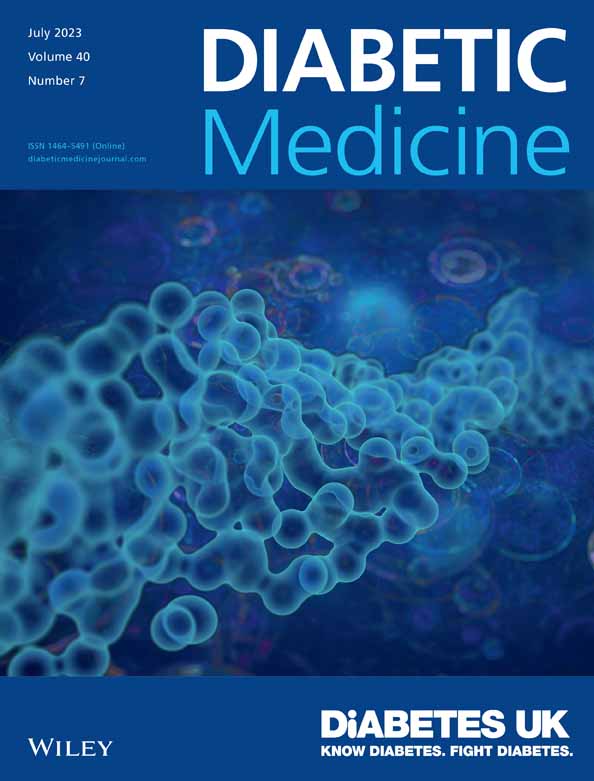Prediabetes and the risk of type 2 diabetes: Investigating the roles of depressive and anxiety symptoms in the Lifelines cohort study
Abstract
Aims
Depression and anxiety may increase the risk of progressing from prediabetes to type 2 diabetes. The present study examined the interactions between prediabetes status and elevated depressive and anxiety symptoms with the risk of type 2 diabetes.
Methods
Participants (N = 72,428) were adults aged 40 years and above without diabetes at baseline from the Lifelines Cohort Study (58% female; mean age = 51.4 years). The Mini-International Neuropsychiatric Interview screened for elevated symptoms of major depressive disorder and generalized anxiety disorder. Glycated haemoglobin A1c (HbA1c) levels determined prediabetes status at baseline (2007–2013), and HbA1c and self-reported diabetes diagnoses determined diabetes status at follow-up (2014–2017). Groups were formed for elevated depressive and anxiety symptoms, respectively, and prediabetes status at baseline (elevated depressive/anxiety symptoms with prediabetes, elevated depressive/anxiety symptoms alone, and prediabetes alone), and compared to a reference group (no prediabetes or anxiety/depression) on the likelihood of developing diabetes during the follow-up period.
Results
N = 1300 (1.8%) participants developed diabetes. While prediabetes alone was associated with incident diabetes (OR = 5.94; 95% CI = 5.10–6.90, p < 0.001), the group with combined prediabetes and depressive symptoms had the highest likelihood of developing diabetes over follow-up (OR = 8.29; 95% CI = 5.58–12.32, p < 0.001). Similar results were found for prediabetes and anxiety symptoms (OR = 6.57; 95% CI = 4.62–9.33, p < 0.001), compared to prediabetes alone (OR = 6.09; 95% CI = 5.23–7.11, p < 0.001), though with a smaller effect. The interaction between depressive symptoms and prediabetes was synergistic in age-and-sex adjusted analyses.
Conclusions
Individuals with elevated depressive, and to some extent anxiety, symptoms in combination with prediabetes may represent a high-risk subgroup for type 2 diabetes.
CONFLICT OF INTEREST STATEMENT
None to report.
Open Research
DATA AVAILABILITY STATEMENT
The data that support the findings of the present study are available by Lifelines (https://www.lifelines.nl/); however, data access is restricted. Requests for data access can be sent to the Lifelines Cohort Study and Biobank (https://www.lifelines.nl/researcher/how-to-apply).




